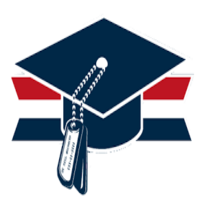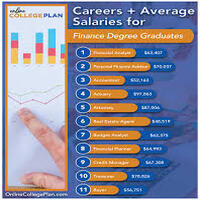
Education Benefits for Veterans: Unlocking a Brighter Future
Education Benefits for Veterans In the quiet aftermath of service, when the uniforms are hung and the combat boots retired, many veterans face a new kind of mission—transitioning back into civilian life. At the heart of this transition lies a powerful tool: education. From career retraining to higher degrees, education benefits for veterans have evolved into a comprehensive framework that not only honors their service but equips them for the next chapter of life.
The Historical Roots of Veterans’ Education Benefits
The genesis of educational support for veterans can be traced back to the Servicemen’s Readjustment Act of 1944—better known as the GI Bill. It was a radical idea at the time: provide returning World War II veterans with money for tuition, housing, and living expenses. The ripple effects were immense. Millions of Americans accessed college, bolstering the middle class and reshaping the economy.
Since then, the GI Bill has undergone numerous iterations, each adapting to the changing needs of veterans and society. Today, its legacy lives on in a range of programs tailored to various eras of service and life circumstances.
Post-9/11 GI Bill: A Transformational Benefit
The Post-9/11 GI Bill, enacted in 2008, marked a new era of veteran education support. Targeting those who served on or after September 11, 2001, the program offers substantial benefits:
- Full tuition and fees for in-state public colleges or a capped amount for private institutions.
- A monthly housing allowance based on the cost of living in the area of the school.
- An annual book stipend of up to $1,000.
- Relocation assistance for those moving from rural areas to attend school.
Eligibility depends on the length of active duty service, with 36 months of service generally yielding full benefits. One unique feature is the ability to transfer unused education benefits to spouses or children—a game-changing provision that extends the GI Bill’s impact to veteran families.
Montgomery GI Bill: The Original Workhorse
Before the Post-9/11 GI Bill, there was the Montgomery GI Bill (MGIB), which still plays a vital role for many service members and veterans. There are two main variants:
- MGIB-Active Duty (MGIB-AD): Offers monthly education benefits to those who served at least two years on active duty.
- MGIB-Selected Reserve (MGIB-SR): Available to members of the Army, Navy, Air Force, Marine Corps, and Coast Guard Reserves, as well as the Army and Air National Guard.
Although it lacks the housing and tuition coverage of the Post-9/11 Bill, the MGIB provides flexibility for those pursuing part-time education, apprenticeships, or non-college degree programs.
Vocational Rehabilitation and Employment (VR&E) Program
Education isn’t always about a degree. For veterans with service-connected disabilities, the VR&E (Chapter 31) program helps them prepare for, find, and maintain suitable employment. Services include:
- Counseling and evaluation to determine career paths.
- Tuition and fees for approved training programs or college.
- Support for apprenticeships, on-the-job training, and certification.
For many veterans facing physical or psychological challenges, VR&E offers more than just funding—it offers a pathway to dignity and independence.
Yellow Ribbon Program: Bridging the Tuition Gap
One challenge veterans sometimes face is attending private or out-of-state institutions that charge more than the GI Bill covers. That’s where the Yellow Ribbon Program comes in.
Participating schools voluntarily agree to fund tuition and fees exceeding the GI Bill cap, with the Department of Veterans Affairs matching the contribution. This initiative empowers veterans to attend prestigious institutions like Harvard, Stanford, or NYU without incurring debt—a significant equalizer in higher education.
Scholarships and Grants: Beyond Government Programs
Government programs are the foundation, but they’re not the whole story. Numerous private scholarships and grants are available exclusively to veterans, service members, and their families. Examples include:
- Tillman Scholars Program: Named after NFL player and Army Ranger Pat Tillman, it supports leadership and academic excellence among veterans.
- AMVETS Scholarships: For veterans and their children pursuing undergraduate degrees.
- Fisher House Foundation Scholarships: For military children, particularly those affected by the loss or disability of a parent.
These financial awards provide additional support for textbooks, living expenses, or even study abroad opportunities, reducing the financial strain of returning to school.
Flexible Education Options: Online and Part-Time Programs
Veterans bring unique life experiences and responsibilities to the classroom. Many juggle work, family, and rehabilitation. To meet these needs, educational institutions have expanded flexible learning options, including:
- Online degree programs from accredited institutions.
- Hybrid models combining in-person and virtual classes.
- Night and weekend courses tailored for working students.
This flexibility allows veterans to advance their education without uprooting their lives or careers.
Trade Schools and Apprenticeships: Career-Ready Paths
Not every veteran wants or needs a traditional four-year degree. For many, trade schools, technical certifications, and apprenticeships offer quicker, hands-on paths to well-paying jobs.
Through programs like Veterans Rapid Retraining Assistance Program (VRRAP) and ApprenticeshipUSA, veterans can pursue training in high-demand fields like:
- Information technology
- Cybersecurity
- Electrical work
- Welding
- Plumbing
- Advanced manufacturing
These options are especially attractive for veterans who want to get back into the workforce quickly with skills that employers actively seek.
Veteran-Friendly Campuses: Creating a Supportive Environment
Going back to school can be daunting, especially for veterans who might be older than their classmates or dealing with service-related trauma. Thankfully, many colleges are becoming more veteran-friendly by:
- Creating Veterans Resource Centers on campus.
- Hiring Veteran Affairs Coordinators to help navigate benefits.
- Forming student veteran groups for camaraderie and support.
- Offering priority enrollment and mental health counseling.
The Veterans Education Transition Support (VETS) certification is awarded to institutions that meet high standards of support for veteran students, helping them thrive both academically and socially.
Challenges and Gaps in the System
While education benefits have dramatically improved, challenges persist. Some common issues include:
- Benefit processing delays: Bureaucracy and paperwork can slow down payments, affecting housing and tuition timelines.
- Lack of awareness: Many veterans don’t fully understand what benefits they qualify for or how to access them.
- Limited academic preparedness: Some veterans struggle with college readiness due to years away from formal education.
- Mental health hurdles: PTSD, anxiety, and other service-related conditions can affect academic performance.
Addressing these challenges requires better outreach, improved systems, and greater collaboration between schools and the Department of Veterans Affairs.
Success Stories: Veterans Rewriting Their Futures
Behind every policy and program are real people whose lives have been transformed. Consider:
- John, a Marine Corps veteran who used the Post-9/11 GI Bill to earn a computer science degree, now working in Silicon Valley.
- Maria, a former Army medic who completed nursing school with VR&E support and now serves in a major urban hospital.
- James, a Navy veteran who became a small business owner after completing a trade school apprenticeship funded through GI Bill benefits.
These stories demonstrate the powerful potential of education to unlock post-service success.
The Road Ahead: Expanding Access and Impact
As the veteran population evolves, so must the education benefits that support them. Advocates are pushing for:
- Simplification of programs: Merging or aligning overlapping benefits to reduce confusion.
- Greater inclusion of non-traditional learners: Recognizing micro-credentials, coding bootcamps, and online certifications.
- Expansion of family benefits: Providing more educational support to veteran spouses and children.
- Stronger transitions to employment: Enhancing partnerships between schools, veteran services, and employers.
Technological advancements and labor market shifts mean that educational agility—combined with veteran resilience—can be a recipe for future economic leadership.
Conclusion:
The American promise to its veterans goes beyond parades and platitudes—it is deeply tied to opportunity. Education is not merely a benefit; it is a bridge. It’s the tool that helps veterans translate military discipline, teamwork, and leadership into civilian success.


